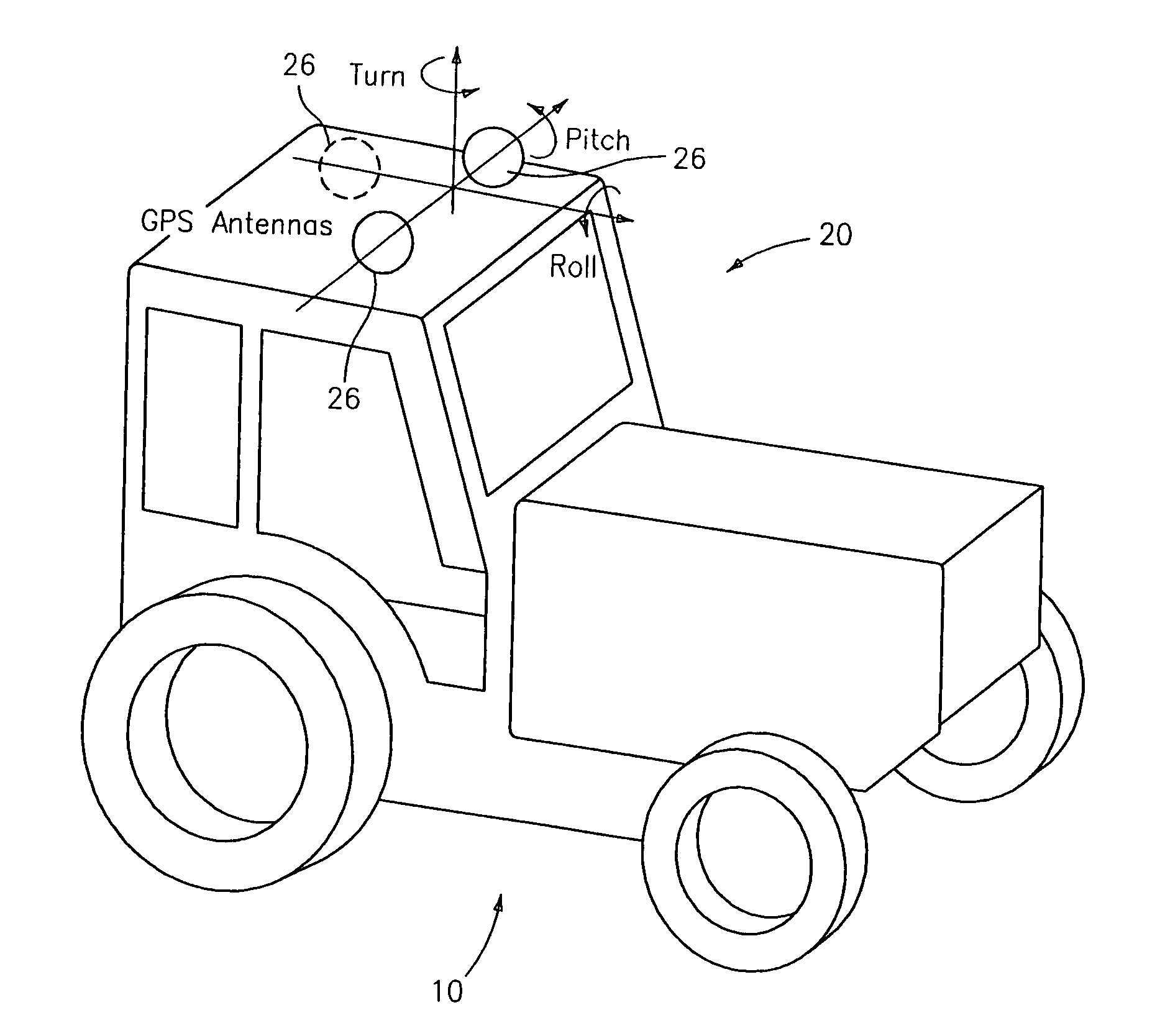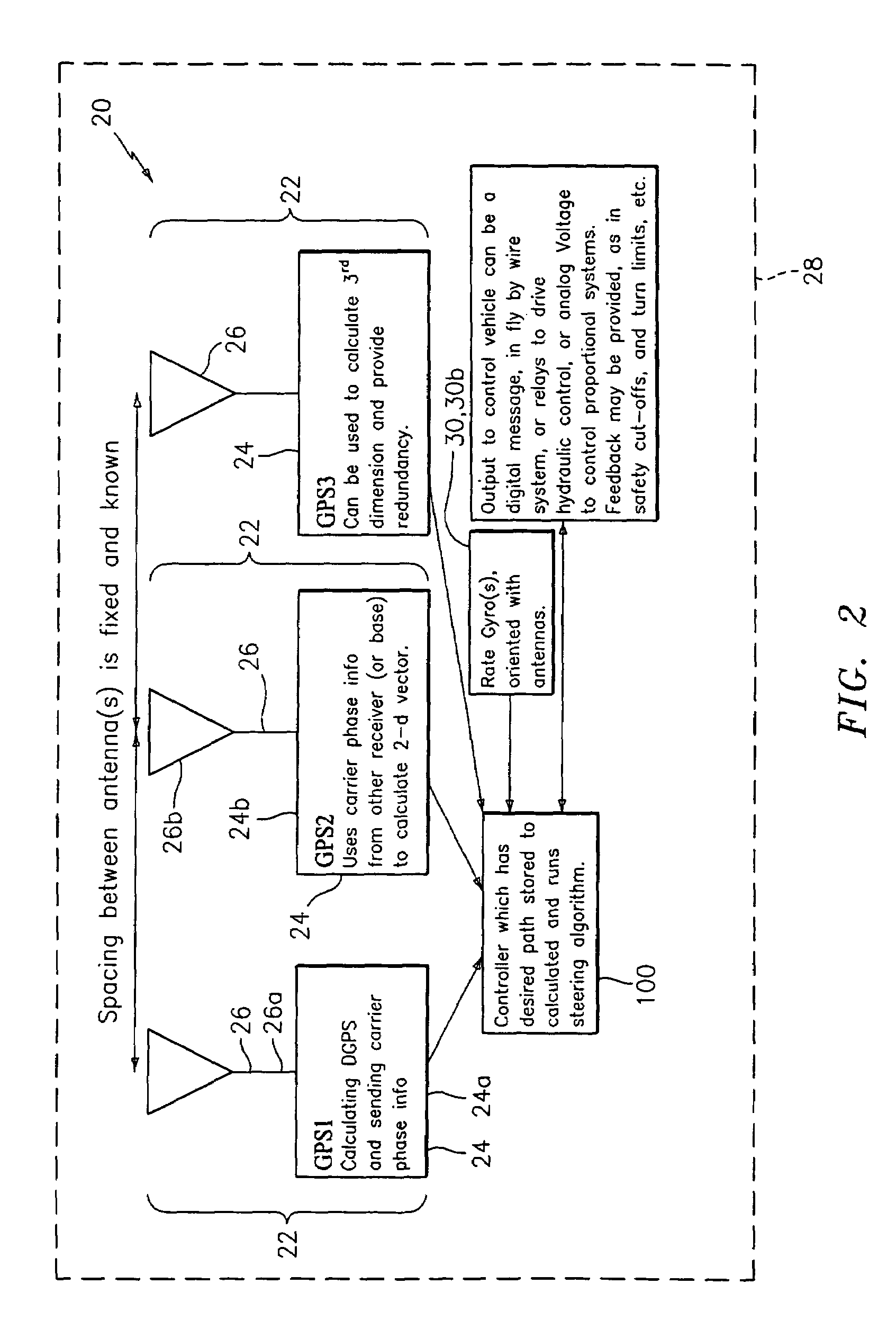Satellite position and heading sensor for vehicle steering control
a satellite position and steering control technology, applied in the direction of process and machine control, instruments, navigation instruments, etc., can solve the problems of not taking into account the actual curvature of the terrain, the inability to determine the poi, and the inability to accurately measure the poi. achieve the effect of avoiding the crossing of the desired track
- Summary
- Abstract
- Description
- Claims
- Application Information
AI Technical Summary
Benefits of technology
Problems solved by technology
Method used
Image
Examples
Embodiment Construction
[0017]Disclosed herein in an exemplary embodiment is a sensor system for vehicle guidance. The sensor system utilizes a plurality of GPS carrier phase differenced antennas to derive attitude information. Moreover, the GPS position may optionally be combined with one or more rate gyro(s) used to measure turn rates. In an exemplary embodiment, the rate gyros and GPS receiver / antenna are integrated together within the same unit, to provide multiple mechanisms to characterize a vehicles motion and position to make a robust vehicle steering control mechanism.
[0018]It is known in the art that by using GPS satellite's carrier phase, and possibly carrier phases from other satellites such as WAAS satellites, a position may readily be determined to within millimeters. When accomplished with two antennas at a fixed spacing, an angular rotation may be computed using the position differences. In an exemplary embodiment, two antennas placed in the horizontal plane may be employed to compute a hea...
PUM
 Login to View More
Login to View More Abstract
Description
Claims
Application Information
 Login to View More
Login to View More - R&D
- Intellectual Property
- Life Sciences
- Materials
- Tech Scout
- Unparalleled Data Quality
- Higher Quality Content
- 60% Fewer Hallucinations
Browse by: Latest US Patents, China's latest patents, Technical Efficacy Thesaurus, Application Domain, Technology Topic, Popular Technical Reports.
© 2025 PatSnap. All rights reserved.Legal|Privacy policy|Modern Slavery Act Transparency Statement|Sitemap|About US| Contact US: help@patsnap.com



